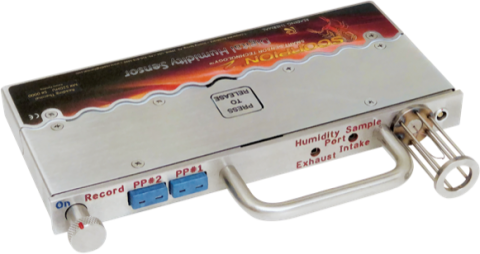Anyone who cares about providing the highest quality baked goods for their customers knows that oven performance is a critical component in the success of any commercial bakery. When it comes to production, consistency and precision are key; otherwise, you run the risk of producing subpar products or wasting time and resources fixing mistakes. But even critical components like ovens have weak points that can put your baking at risk—one of those weak points being changes in humidity levels in the environment around your ovens. To ensure consistently perfect results every time, many bakeries employ productivity-boosting strategies such as humidity profiling their commercial (or industrial) ovens.
Understanding how your commercial bakery’s environment affects oven performance allows you to take the precise measurements needed to boost productivity and ensure consistent results. Using Reading Thermal’s specialized technology, bakeries can easily and quickly measure their oven’s humidity levels to make the necessary adjustments. With a precise picture of your oven’s performance, you can make changes to reduce costs and minimize waste.
The Role of Humidity
Oven baking environments along a conveyor belt affect the baking process of your products by controlling several variables at a given time essential for finalizing the highest quality goods possible. Humidity is one of these critical parameters and is commonly defined along two terms: the mass of moisture relative to dry air present; and the dew point, where moisture condenses on a surface. These elements act as transport methods for achieving certain desirable qualities in your baked goods.
Crust Color
Humidity levels in bakery ovens also influence the color of your product’s crust. The faster air movement caused by low humidity levels accelerates drying, giving products a dark brown appearance. Higher humidity, however, results in a lighter shade for the product’s crusts.
Dough Expansion
Humidity levels during baking influence the rate at which dough expands. High humidity delays crust formation, allowing for more significant expansion of the dough and a higher product yield. Low humidity levels, on the other hand, will cause crust formation to occur quicker and stymie dough expansion.
Moisture Content
Humidity levels influence how much moisture is present in your products. Low humidity carries away moisture quicker, resulting in a dried-out texture and shorter shelf life. High humidity, however, will carry away less moisture, resulting in a softer product with improved sensory qualities and extended shelf life.
Crust Character
Certain baked goods want to produce glossy crusts as a part of their aesthetic appeal and sensory profile. Introducing high humidity levels helps create the consistency needed for a successful outcome.
The Benefits of Humidity Profiling with Reading Thermal
Reading Thermal’s SCORPION® 2 Digital Humidity Sensors are designed to measure Dew Point Temperature, Absolute Humidity, and Relative Humidity. These data points are the perfect tools to help bakeries better understand and control their environment. By using Reading Thermal’s humidity sensors, you can accurately monitor changes in your oven’s environment to detect any problems with heating or cooling before they become significant issues. This way, you can avoid costly mistakes or delays caused by unexpected conditions.
Creating accurate humidity profiles of commercial bakery ovens allows bakers to easily and accurately adjust their oven conditions precisely according to what baked products they’re producing. This helps ensure that their ovens always perform at their highest efficiency and deliver the best possible results. Call us at (610) 678-5890 Ext. 2, or contact us online for more details about our innovative products.

